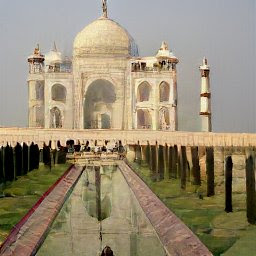History of India
The history of India dates back to the ancient Indus Valley Civilization and is one of the world's oldest civilizations. India was ruled by various dynasties and empires including the Maurya Empire, the Mughal Empire, and the British Raj. India gained independence from Britain in 1947 and became a secular democratic republic. India has a rich cultural heritage with influences from various religions such as Hinduism, Buddhism, Jainism, and Islam. The country has made significant progress in fields such as science, technology, and economics, but still faces challenges such as poverty, corruption, and communal tensions.
India has a rich and diverse history, with a mix of different cultures and religions that have shaped its development. Some key historical events and periods include:
Indus Valley Civilization (3300 BCE-1300 BCE): The ancient Indus Valley Civilization, centered in what is now Pakistan and northwest India, was one of the world's first urban civilizations.
Vedic Period (1500 BCE-600 BCE): The Vedic Period is named after the Vedas, the oldest Hindu scriptures, and saw the rise of Hinduism and the development of the caste system.
Maurya Empire (321 BCE-185 BCE): The Maurya Empire was one of the largest empires in ancient India and was ruled by the famous emperor Ashoka, who promoted Buddhism and nonviolence.
Gupta Empire (320 CE-550 CE): The Gupta Empire was a golden age in Indian history, marked by significant cultural and scientific advancements, as well as the reign of the famous king Samudragupta.
Mughal Empire (1526-1857): The Mughal Empire was a Muslim dynasty that ruled over much of India, and saw the construction of iconic monuments such as the Taj Mahal.
British Raj (1857-1947): The British Raj was the period of British rule in India, marked by cultural exchange, but also by exploitation and discrimination.
Independence and Republic (1947-present): India gained independence from Britain in 1947 and became a secular democratic republic. Since then, India has made significant progress in fields such as science, technology, and economics, but still faces challenges such as poverty, corruption, and communal tensions.
Partition and Formation of Pakistan (1947): At the time of independence, India was divided into two countries: Hindu-majority India and Muslim-majority Pakistan. This resulted in large-scale violence and displacement of people on both sides of the border.
Cold War Era (1947-1991): During the Cold War, India adopted a non-aligned foreign policy, maintaining good relations with both the Western and Eastern blocs.
Economic Reforms (1991-present): In 1991, India embarked on a series of economic reforms that liberalized the economy and opened it up to foreign investment. This led to significant growth and increased prosperity, but also increased income inequality.
India-Pakistan Conflicts: India and Pakistan have been in conflict over the disputed territory of Kashmir since independence. This has resulted in several wars and skirmishes, as well as tensions between the two countries.
Social and Political Movements: India has a long tradition of social and political activism, with notable movements including the Indian independence movement, the Dalit rights movement, and the women's rights movement.
Globalization and Diplomacy (1991-present): In recent years, India has become more engaged with the world, participating in international organizations and strengthening its diplomatic relations with other countries.
Nuclear Program: India has a civilian nuclear program, but has also developed nuclear weapons. This has caused tensions with neighboring countries, particularly Pakistan, and has led to international sanctions and restrictions.
Territorial disputes: India has territorial disputes with several of its neighbors, including Pakistan over the Kashmir region, China over the border in the east, and Bhutan over the border in the northeast.
Regional Conflicts: India has been involved in several regional conflicts, including the Indo-Pakistani Wars of 1947, 1965, 1971, and the Kargil conflict in 1999.
Cultural Heritage: India has a rich cultural heritage, with diverse traditions and practices spanning music, dance, art, architecture, literature, and more.
Natural Disasters: India is prone to natural disasters such as monsoons, floods, droughts, earthquakes, and cyclones, which can have devastating impacts on the country and its people.
Corruption: Corruption remains a major problem in India, affecting government institutions, businesses, and individuals. Efforts to combat corruption have been made in recent years, but it remains a significant challenge.
These are some of the ongoing issues and challenges that India faces as it continues to shape its place in the world.
Reform Movements: India has a long tradition of reform movements, aimed at improving the lives of marginalized groups and promoting social justice. Notable examples include the Dalit rights movement, the women's rights movement, and the environmental movement.
Technology and Innovation: India has a thriving technology industry and has made significant contributions to the field of science and technology, including developments in fields such as mathematics, astronomy, and medicine.
Military History: India has a long military history, including significant contributions to both World War I and World War II, as well as numerous conflicts on its own soil and in the region.
Education: India has a strong tradition of education, with ancient universities such as Nalanda and Takshashila dating back thousands of years. Today, India has a large education sector, with a growing number of universities and institutions of higher education.
Religion: India is home to a diverse array of religious communities, including Hinduism, Islam, Christianity, Buddhism, Jainism, and Sikhism, among others. These religions have shaped India's cultural heritage and continue to play an important role in the country's politics and society.
Art and Architecture: India has a rich tradition of art and architecture, with notable examples including the ancient rock-cut cave temples of Ajanta and Ellora, the Taj Mahal, and the elaborate Hindu temple complexes of southern India.

Comments
Post a Comment